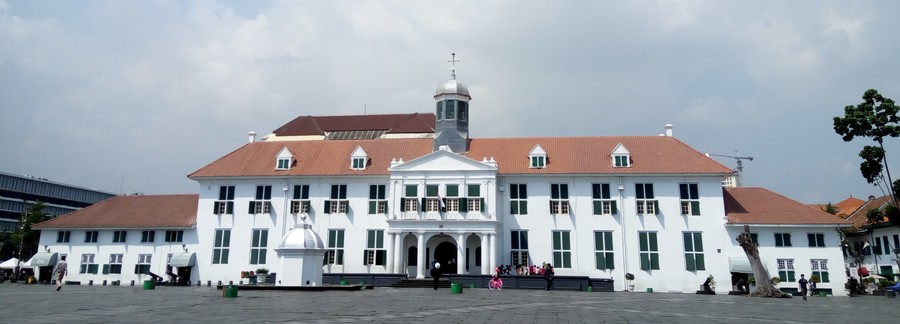The city government of Jakarta, Indonesia has developed a comprehensive urban plan to revitalize the historic neighborhood of Kota Tua in an inclusive and participatory way.
Kota Tua is located in the historic heart of Jakarta and contains a number of cultural heritage sites. These include buildings and canals that were constructed during the 17th and 18th century colonial period. These sites serve as tourist attractions and contribute to the city’s economic, social and cultural growth.
Despite its rich cultural heritage, the area has declined as it suffers with poor infrastructure and service provision. The city government of Jakarta has instituted a comprehensive development plan to renew the neighbourhood’s vibrant atmosphere, improve the standard of living for citizens and revitalize the economy.
The plan includes a proposal to apply for UNESCO World Cultural Heritage status. If successful, the revitalization program will be accelerated in developing Kota Tua as a more attractive destination to both domestic and international tourists further contributing to its overall economic growth.
The recent efforts to revitalize Kota Tua commenced in 2005 with the announcement of a revitalization program by the city government. In 2011, Kota Tua was declared a national tourism destination by the Indonesian Ministry of Tourism which enhanced its role as a key tourist area of Jakarta. In 2014, the city established a master plan for the Kota Tua area which intensified efforts to conserve and revitalize the historic city center.
A key objective of the revitalization plan is to increase tourism to Kota Tua. This is in line with the Ministry of Tourism’s plan to position Jakarta as the major destination for international tourists visiting Indonesia. For this purpose, the preservation of the neighborhoods cultural heritage plays a crucial role, as it has economic value for both tourism and business.
Another key objective of the plan is the creation of high quality public spaces, including the redevelopment of Kalijodo – a red light district that has been transformed into an integrated family-friendly space. Previously, Kalijodo was densely populated and infamous for activities such as drug trafficking, gambling and prostitution.
Today, the 3.4 hectare area is a semi-natural green park, including a playground, an international-standard skate park, with a Betawi-style mosque and a food court. Critically, the entire redevelopment process was organized in a participatory way, actively including the local residents and various stakeholders. For affected residents, the city provided housing compensation and free skills training at vocational centers.
Furthermore, child-friendly facilities, including a library and a skate park were set up and a wall for street graffiti to attract young people was established. This inclusive approach led to a successful revitalization of the area and to a very high satisfaction among residents and visitors with the new public space.
Photo of Kota Tua © UCLG Learning.

